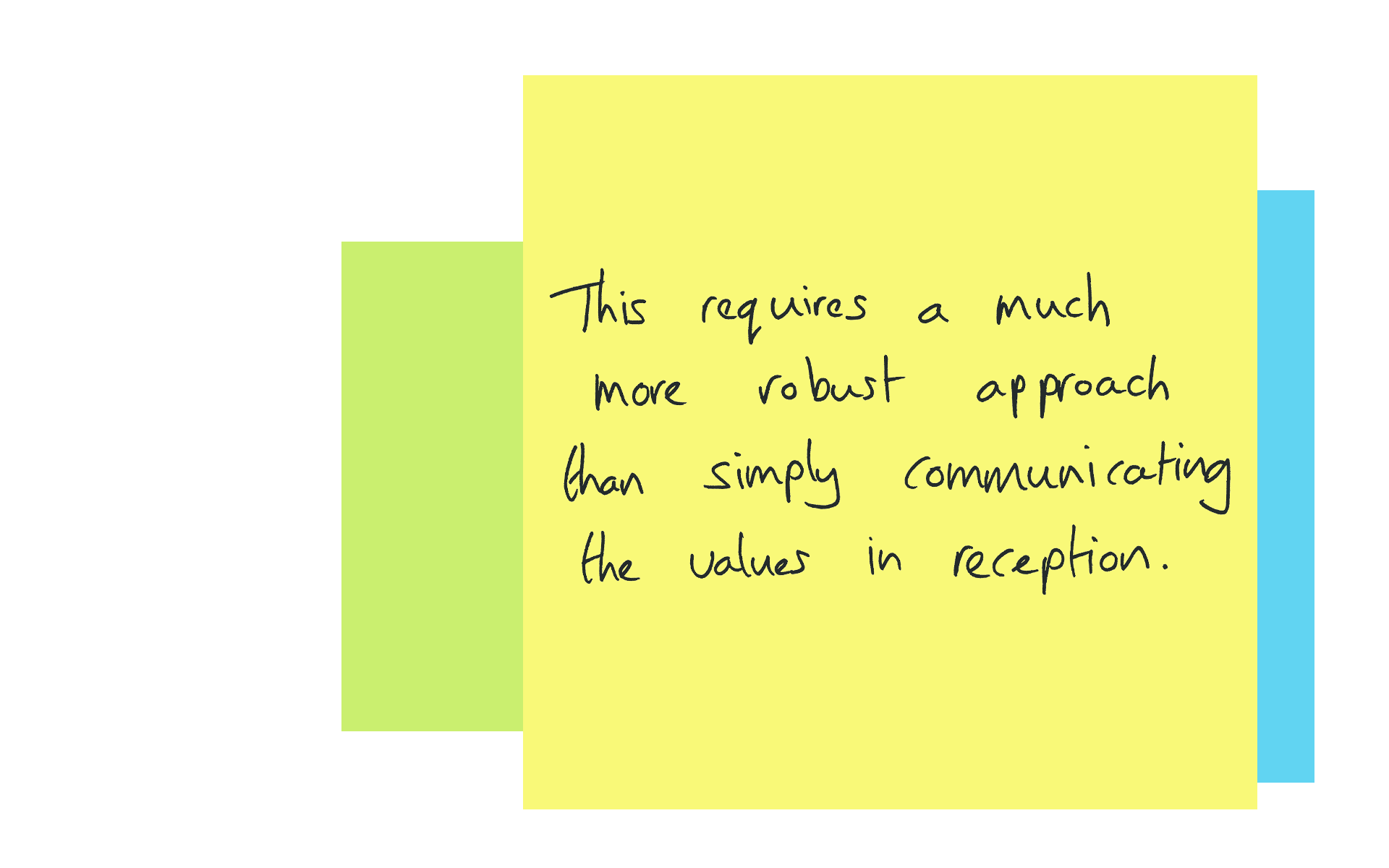How to unearth a position
We’ve observed that the most successful organisations and brands we’ve worked with have one thing in common: a belief in the importance of position. Whether you want to call it a why, purpose, narrative, vision or big idea, it’s all the same. It’s about finding a simple, powerful expression of everything the brand or organisation is about. And then putting this at the heart of everything. Using it to energise teams, align activity, create fame and fuel innovation.
Helping clients to unearth a position is what we get asked to do more than anything else. Our own belief in its importance has led us to refocus our own business on this approach to brand building. We’re currently repositioning Squad and have developed a whole culture within our business around this. So, it seems only appropriate that in this, our fifth POV* piece, we return to the subject of position. In our first POV* piece we wrote about using a narrative to present a position. This time our focus is on how to find a position. Here are our 15 pieces of advice for how to do this.
1. Answer three simple questions
If you search for “positioning statement”, you’ll get lots of variants on statements like this: for [your target market] who [target market need], [your brand name] provides [main benefit that differentiates your offering from competitors] because [reason why target market should believe your differentiation statement.]
Positioning is essentially about answering the three questions that all these statements are based on:
– Who is the audience?
– Who is the competitive set?
– What is the unique aspect of the organisation or brand to focus on?
The answers to these questions create the basis of a position. For example, when positioning a soap, you could target builders: focus on the cleaning power of the product and try to steal market share from high-performance gels. Or you could target people with sensitive skin: focus on gentleness and try to steal market share from moisturising soaps. These are the strategic decisions to be made.
These questions can be answered poorly or well. Strategy is the art of sacrifice. If no difficult decisions have been made, then the likelihood is that the answers are too broad or generic. For example, defining the audience isn’t just about some general demographics. Who really are these people? What do they think, believe in and hate? The same applies to choosing competitors. Should a pub be competing against the other local down the road, or a six-pack at home? There needs to be total clarity in the answers to these three questions.
2. Find the central idea
The three questions above form the foundation of a position, but do not provide the magic ingredient. What’s also needed is a powerful idea to wrap it all around. This is what will move it from a dry, strategic statement to a powerful concept that inspires action.
In our first POV* piece we talked about communicating this idea as a narrative, which is still a good way to think about it. Particularly because brands today need to undertake a huge volume of activity at a rapid pace. An easy way to see a narrative in action is to look at successful political campaigns. When the politician or party has a strong position, you can see it coming through in every piece of activity, whether the subject is healthcare, the economy or foreign policy. A great example is Barack Obama’s “change you can believe in” idea, which was the basis of his victorious 2008 election campaign.

3. Articulate position as a manifesto
Once the three questions have been answered and the central idea found, the next task is to articulate these in some way, so that they can be shared with others. The best way we’ve found to do this is by writing a manifesto. This will allow you to set out the key points of the position and give a strong sense of the narrative that connects them. It’s also helpful to agree a word, phrase or sentence that encapsulates the narrative of the brand. When we positioned the pub and brewer JW Lees, we coined the phrase “putting the brewery at the heart of the brand”. When positioning Eurocamp we hit on the word “possibilities”.
If time and budget allow, then it’s an excellent idea to turn the manifesto into a short video. The added colour that this brings will aid understanding and the emotion you can introduce will make it more moving. This doesn’t have to be an expensive affair. We often pull together rough-cut manifesto films internally as part of our strategic process, although these are frequently produced properly once the process moves on to communicating with the wider business.
4. Avoid onions, keys and pyramids
This was another of the key points from our first POV* piece, but it’s worth reiterating since the intervening years have not made us any more enthusiastic about onions, keys and pyramids. We always avoid these models as ways to articulate a position. In our experience, no one really understands them, which makes them ineffective as a means to clarify a vision or inspire action. The main issue is that they include sections that don’t need to form a core part of position development. Values development should really be a separate exercise to do with the culture of the organisation. And personality is best handled separately, as it primarily relates to the tone of communications.
5. Unite strategy and creativity from the outset
We’ve explained what a position consists of: the answers to three questions and a central idea, all wrapped up in a manifesto. But how do you do this? It starts with the team. Finding a position is often seen as an exercise to be conducted by strategists. We believe that positions should be developed by strategists and creatives in partnership. Ultimately, a position will only be effective if it translates into action. As Thomas Edison said: “Vision without execution is hallucination.” Creatives are able to see what will and won’t be executable, which ensures that you have a workable position from the outset. They can also add the colour and emotion referred to in the previous point, which is what turns a position from a bland strategic statement into a powerful vision. At Squad, our culture and process are built around strategists and creatives working in partnership throughout the process, as opposed to in sequence.

6. Spend time on the problem not the solution
There’s a story about Einstein that we retell a lot. He said that if he had one hour to save the world, he’d spend 55 minutes understanding the problem and five minutes on the solution. The strategic and creative teams must start by building their understanding, rather than jumping into solutions.
7. Don’t see the world as a market, but a place people live in
In order to develop a full understanding of the problem, there are four worlds you need to inhabit:
– You need to get under the skin of the organisation or brand you’re positioning.
– You need to spend time in the industry.
– You need to observe (and use) the competitors you’re seeking to outperform.
– And you need to know the audience you’re targeting.
The people who inhabit these worlds are not numbers. Nor are they guinea pigs to be observed through social media. They are real people. They are your partner, friends, colleagues and relatives. If you’ve got the budget, then you can commission all kinds of research to help you become familiar with these worlds. However, we have found that one of the best ways to do this is for the team themselves to get out there and spend time with people. In the past, we’ve spent an icy-cold morning out on a Cumbrian hill farm, gone camping around Europe, met with the fruit-and-veg packers of New Covent Garden Market at dawn and spent a day in a maintenance team’s van in one of the most deprived areas of social housing in the country.
8. Search in the space between the inside and outside
You’ll find the central idea in the space that exists between those who are inside and those who are outside the organisation. A position must be something that staff feel passionate about. And it must be desired by customers. Finding the common motivation results in a position that is equally compelling to those who are inside and outside the organisation.
9. Clients have expertise but need naivety
The creative director of one famous London agency would get his team together at the start of any new business pitch. Before he let them look at the brief, he’d get them to write down everything they knew about the brand in question. And he’d say to them: “This is the last time you will be able to think about the brand like a real consumer.”
One of the mistakes we all make is thinking that our audience has anywhere near the level of knowledge or interest in a brand that we do. In reality, they give us a fraction of the attention we think they do. An external partner will never match the knowledge a client has of their brand or industry. A client lives in their world full-time, and often has done for many years. We inhabit it fleetingly. But this enables us to think much more like the people we’re targeting. It gives us a perspective and naivety that are invaluable and which it’s important to keep hold of.
10. Ask why, why, why, why, why?
A fantastic tool for getting under the skin of anything is “the five whys”. When you ask a why question, don’t settle for the first answer you get. Keep asking why. Ask why to every response until you’ve done so five times. At this point, you might be close to a deep understanding, since generally the surface-level issue is not the real issue. We often see this when clients come to us with questions. Often the question they’re asking isn’t the question that needs to be asked. For example, when Westmorland approached us, it was with the question: “What should we call our new motorway service area?” We helped them to understand that the question they should have been be asking was: “What does our brand stand for?” By answering this we were able to work out what to call the new service area.
11. Can the opposition be un-positioned?
Putting aside whatever your position (pardon the pun) is on Brexit, it’s a fascinating case study on positioning. I’d recommend watching Brexit: The Uncivil War – the Channel 4 drama starring Benedict Cumberbatch as Dominic Cummings, the campaign director of Vote Leave. It’s illuminating to see the clarity of thinking that went into the position they developed: “Take Back Control”. This is a great example of a position that frames the choice for people. Given a choice between ceding control and having control, who would opt for the former? And the addition of the word “back” was inspired, since it suggested that the control had been lost. The Remain side never managed to present an equally powerful alternative framing of the debate, which would have worked in their favour. Focusing on the competition isn’t always the answer, but sometimes thinking about framing the choices is a great approach.
12. Remember the point of the exercise
When John F. Kennedy visited the Nasa Space Center at Cape Canaveral, he saw a janitor carrying a broom and asked what he was doing. The janitor replied: “Mr President, I’m helping put a man on the moon.” Giving everyone in an organisation a purpose is powerful. Unfortunately, the idea of purpose has become equated with having a social purpose.
The CEO of Unilever recently said that the company would sell some of its brands, even big revenue drivers, to other businesses if these brands did not “contribute meaningfully to the world or society in a way that will last for decades”. It is vital now to take ethical and environmental responsibilities seriously. But this is a hygiene factor, and not always the central idea that motivates those who are inside and outside the organisation or brand. This issue isn’t exclusive to social purpose. It can also be seen a lot in areas like education. Institutions can end up developing lofty positions on the benefits of education, but these are so removed from why someone would choose the particular institution that they lack any persuasive power. It’s important to remember that we are trying to persuade people to take action.
13. Position and profit have different foundations
The V&A Museum once advertised their restaurant using the line: “An ace caff, with quite a nice museum attached.” It illustrates perfectly that the reason people choose a brand may not be the same as the thing that makes money. JW Lees are another good example of this. The positioning we developed was built around their brewery and beers. But sales of soft drinks and Americanos drive a good amount of their revenue, even though you could never differentiate the brand based on these things.
14. Argue
The collaboration between strategists and creatives is crucial to creating a successful position. Strategists are needed for their clarity, simplicity and vision. And creatives for the colour, emotion and artistry that they add. Thinking about how these two skill sets can work together effectively is vital. We’ve written before about brainstorming and its premise that “every idea is a good idea”. It isn’t. Every idea is a first idea. A thought to be knocked about and developed; handled with care, but also tested to destruction. Studies have shown that healthy debate produces better ideas than the classic brainstorming rules. So keep it respectful and constructive, but do argue.
15. Don’t let logic kill the magic
Last but not least, be careful not to overthink all of this. It all comes down to a good story, well told. If you’ve got one, handle it with care and don’t let it be killed by committees or logic. As Leonardo da Vinci said: “It is by logic we prove, but by intuition we discover.”
— RG















